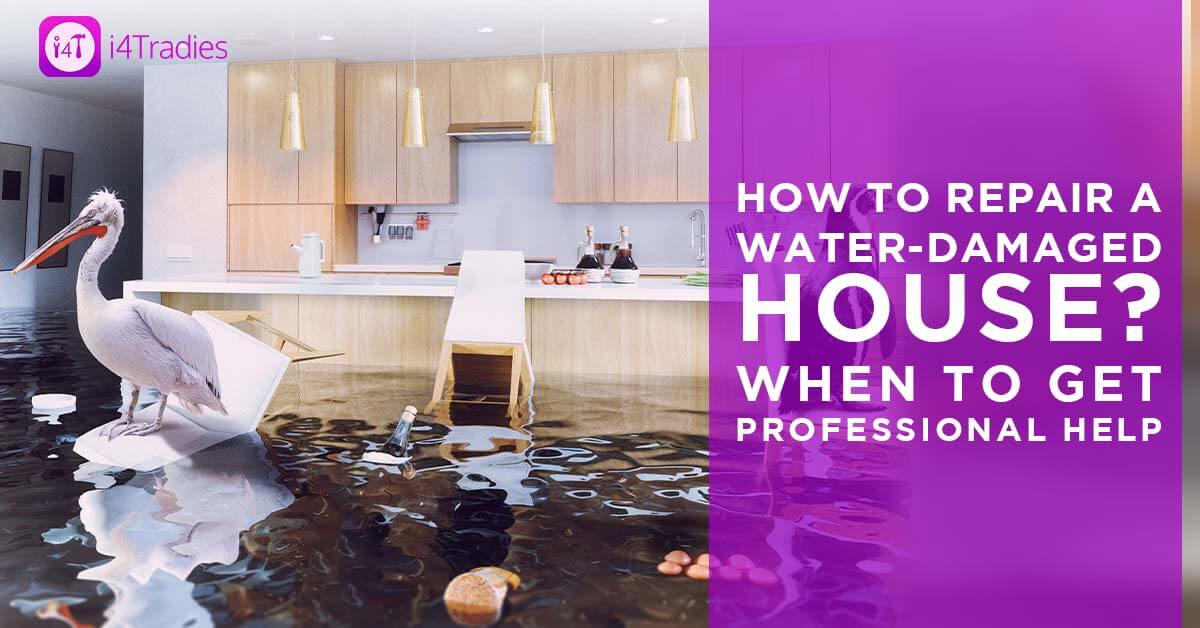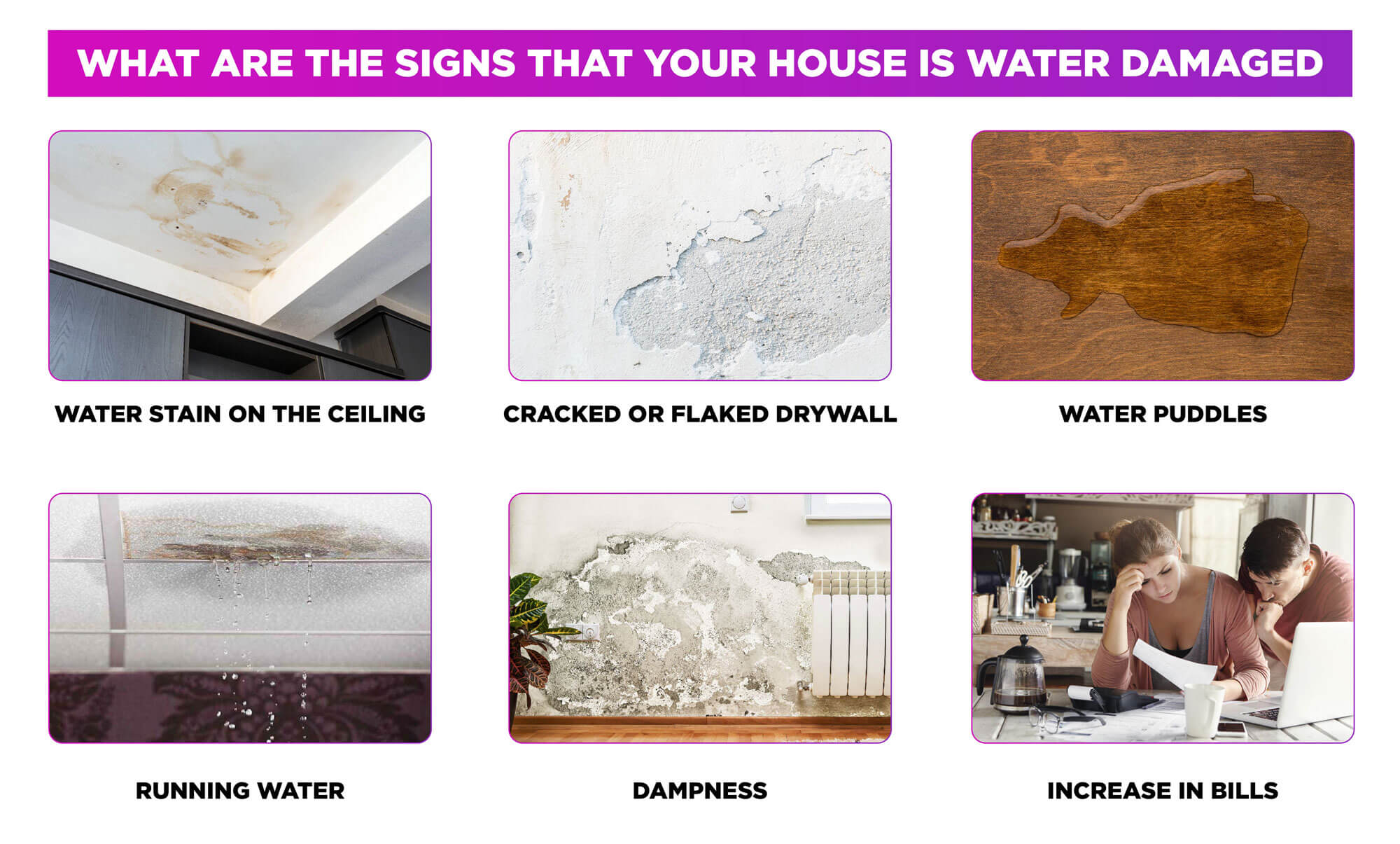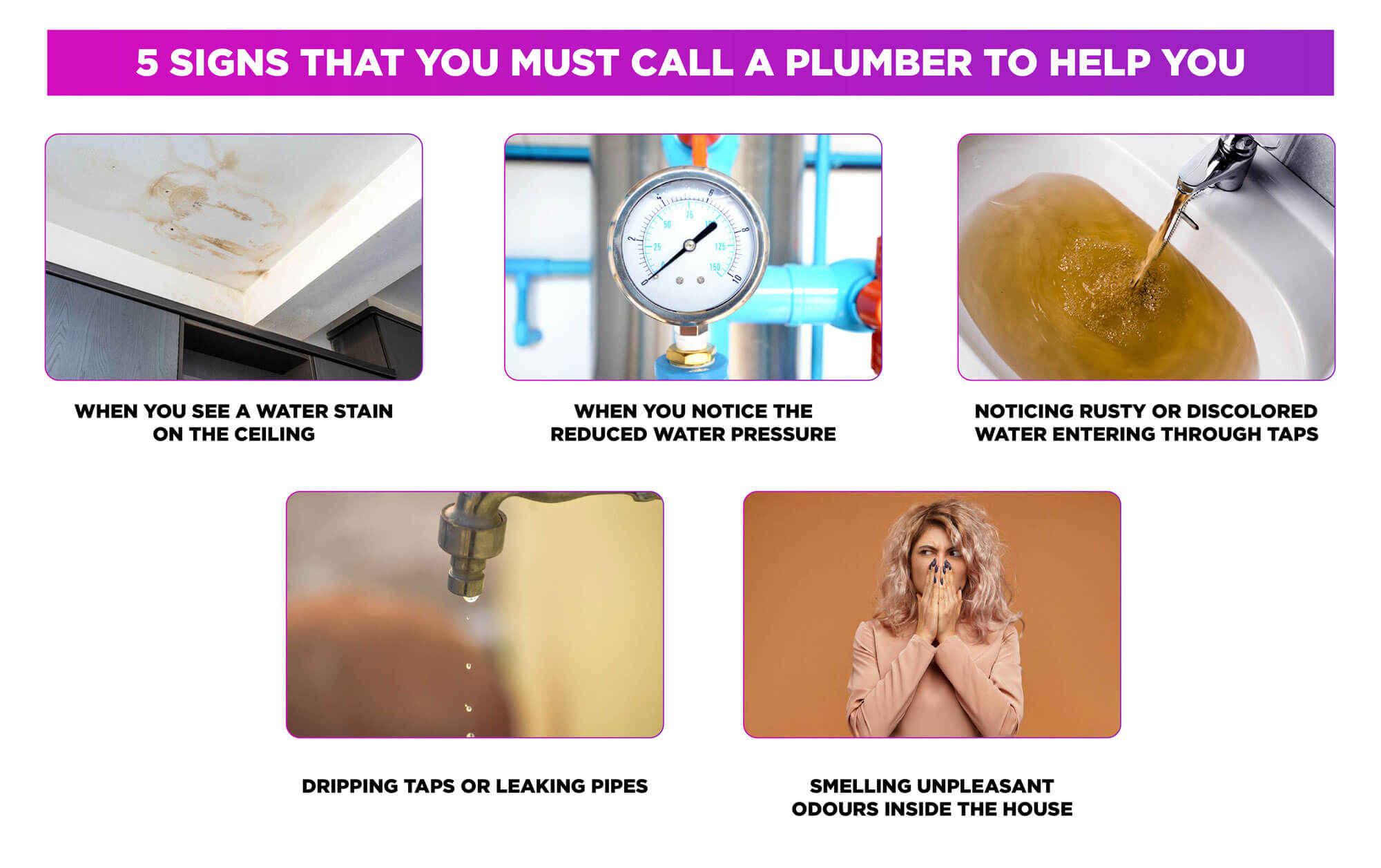There are many ways through which water can enter your home. The 3 most typical types of water flow in a property are:
- Clean Water – This type of water entering into the property comes from rain or through a leaky pipe. Clean waters are the easiest water issues faced by many homeowners, it is simple to locate and clean before any major damages are caused.
- Grey Water – Homeowners commonly find grey water coming from appliances such as dishwashers, washing machines and the toilet. Damage to the appliances, neglect in cleaning water filters or avoiding appliance maintenance can cause flooding. When your house is flooding with grey waters it is normally contaminated making it even difficult to clean after repairs.
- Black Water – The worst type of contaminated water that overflows during water leaks from sewage. The black water is filthy, contaminated and causes major damages to the structure of the house, walls creating moulds and other issues. Professionals highly recommend not to do repairs on your own when your home is contaminated and flooded with black waters.
Whether your house is flooding from clean, grey or black waters the task of cleaning up the mess after the water-damaged house is a hassle. This is why we recommend that you be cautious about leaks, pipe damages or other repairs so that you can avoid a large bill on your expenses.
What are the signs of a water-damaged house
When you first start noticing wet areas in your home, then you need to look for the issue and prevent any further water damage to the property. Here are a few signs that indicate your home is water damaged.
Water stain on the ceiling – Keep an eye for any discolouration on your ceiling, the interior and exterior walls of your property. Water rings on the ceilings usually point towards a leaking pipe. It should be checked by a plumber before the wall gets moulded and soggy.
Cracked or flaked drywall – Notice whether the walls or ceilings drywall is starting to crack or flake, water damage can cause these types of signs.
Water puddles – Leaks can lead to water puddles in your home. If you have a dripping sink, toilet or tap then cleaning it will not solve the problem. You need to find what’s going on before it becomes a bigger leak issue. You might even find some wet spots around your sinks that can damage the walls or the cupboards.
Running water – Some water damages are less seen and more heard. You might hear a lot of running water even though the taps are turned off. A dripping sound or creaking floor can tell you that there is damage in the house, although the sounds may also be the perfectly normal functions of the system. Check with a plumber before making a decision.
Dampness – When your walls or floors are flooding, then there will be a damp, musty feel to the environment. You cannot miss the mouldy smell caused by the dampness. Smelling mould and dampness is one of the biggest indicators of a house being victim to water damage.
If you smell such unpleasant smells around your home, it is best to call in a professional to inspect the cause and provide you with a solution. The dampness can also mean that sewage issues are causing a bad odour.
Increase in bills – A sudden spike in your utility bill is not a common home issue. When homes have hidden leaks, water damage or other plumbing issues, the bills increase. If you notice an unusual change then contact a plumber as soon as possible.
What are the commonplaces of water damage
A concern that many homeowners face due to water damages is the development and growth of mould.
It takes only 48hours or less for moulds to grow in high moisture areas. Thus, causing further damages to walls and other hidden areas in your home.
DIY or trying to get an amateur to fix the issue will not help your property.
Even though you might think that you have stopped the leak and fixed the issue from the outside, the inside of the walls or floors may be wet and getting worse.
Here are the most commonplaces to find water damage in a house
Sinks
The most commonplace for water damage, dripping or leaking pipes are coming from sinks and showers. There may be many reasons including the grout or caulk wearing off. The linings of the wall or the drywall begin to get moisturised, discoloured and even in some instances, you may notice mould growing under your sinks or showers.
Getting them patched up will help you avoid damage.
Leaky water pipes
The main cause of many home water damages is leaky pipes. It can be frustrating and scary when there is a hidden pipe leaking behind the walls. The water can seep in and damage the walls and floors causing flooding and other damages to the property.
A leaking pipe must be dealt with by a professional plumber so that any future damages will be minimised.
Toilets
The most common appliance that uses a lot of water each day. The outflow and the inflow of water are common, up until the toilet starts flooding and filling the bathroom floors. It can be disgusting and disturbing knowing that your rugs, walls and surrounding are being contaminated with bacteria-filled water.
When you are in such a situation, the first instinct to stop the overflow is to switch off the main water and do an inspection. Depending on the cause you can take the necessary measures to clean up. Call a professional to check on your system and tank. Sometimes in the worst cases, homes with toilet water damages need a sewage cleanup and professional disinfection.
Heaters
Old water heaters are the most troublesome appliance in the house. Many houses have reported a leak or burst coming from water heaters. Whether you have a small leak or flood, the damage caused by water heaters and a burst water pipe can be a menace to you.
You can upgrade, fix or repair the heaters before the mould develops.
Refrigerators
Freezers and refrigerators are the two most unnoticeable appliances when you are facing water damage. If there is water flooding under your freezer or refrigerator you need to immediately unplug the appliance and check behind the walls for any signs of water damage.
If there is any dripping then use a cloth or call a professional to assist you. It is dangerous to leave appliances working with electricity to flood.
Air Conditioners
Every home has air conditioners to keep the house cool and chilled during the hot season. Water flowing from an AC is quite normal and nothing to worry about. However, if you start noticing moulds growing on the walls next to your air conditioner then that indicates a problem. Any drips or leaks can cause this and you need to inspect the machine.
Check the condensate pump, refrigerant, and drain line for leaks.
Washing Machines
Laundry is another common task in many homes. The machine will use up to around 30 gallons or less for every wash. Older washing machines are categorised as risky appliances for causing water damage in your home. The pipes can start leaking causing a disaster.
Many homeowners usually situate their washing machines in the basements. If in case there is a water damage issue then the floors will start flooding making it the perfect space for mould to grow.
Sump Pumps
During heavy rains or storms, the sump pumps can start causing trouble to your home. If your appliance is old or unable to handle the water then it can start malfunctioning and flooding the areas. Your walls and floors will be damaged and it can be very hectic to clean and repair such a mess.
Air Ducts
Maintaining your air ducts in-between seasons is important because it can be the most problematic if any mould starts building within the ducts. Many owners are unable to reach inside them to clean, this can lead to a neglected and moisture suitable area for mould spores and debris.
In a matter of days or weeks, your property will be covered with mould.
How to repair and maintain your house to avoid water damages
Water damages are listed among the most common issues that many homeowners face during the seasons. Homeowners get insurance claims specifically due to water damage issues in a property. It can be costly for you if your insurance does not cover the repair costs.
So don’t be surprised if you come across a maintenance checklist that can help protect yourself from the costly repairs caused due to water damages.
You need to maintain the exterior and interior of your home. Let us start with the maintenance that needs to be done outside your home.
Read more : Clogged Drains? When Should You Call A Plumber
Outside maintenance tips for your home
There are plenty of signs that you must look outdoors to locate the water damage. These include:
- Checking your properties sides. The water seeping in through the slopes can cause major damage to the foundation of the property.
- Clean your gutters and downspouts twice a year to avoid blockage and accumulated dirt such as leaves during the fall. You can also check the gutters to ensure there is no ice inside. Divert the water from the house. Water collected on the roof or gutters can start flooding and causing leaks.
- Disconnect any hoses from the faucets. Leaving water in a hose during the winter season can cause the pipe to block and stop the water flow. It can also cause a burst of water pipe damaging your home walls and floors.
- Maintain the trees and shrubs around your home. Tree roots are one of the main causes to crack walls and underground structures. The roots can creep in and start growing creating pipe leaks or other damages.
Inside Maintenance tips for your home
Once you have added the necessary tasks to do outside your home, it is time that you focus inside.
To avoid major costs and water damages check for the signs and make a maintenance list to help you keep your home healthy.
Here is what you can do to avoid water damage inside your home:
- Check and maintain your home appliances such as refrigerator, water heaters, and washing machines
- Know exactly where the main water line is located inside the home. Many water damage situations require an immediate shut down of the water supply.
- Monitor your water bill for any changes.
- Keep check of the water pressure in your home. When there are hidden leaks inside the pipes, the water flow will reduce lowering the pressure.
- Install water detectors near your heaters, pump, washing machines, dishwashers and other appliances. Whenever there is excessive moisture or flooding the sensor will be activated and notify you quickly.
- Pay close attention to inside cabinets and other cupboards that have pipelines. Keep an eye for any mould growth and keep the insides clean and disinfected.
When to get a plumber or handyman help to repair water damage
Calling a licensed professional to repair water damages in your house is the best call you can make for your home. The experts know their way and they can reduce so much damage and future costs if you call them sooner.
Here are 5 signs that you must call a plumber to help you:
- When you see a water stain on the ceiling.
- When you notice the reduced water pressure.
- Noticing rusty or discolored water entering through taps.
- Dripping taps or leaking pipes.
- Smelling unpleasant odours inside the house.
















